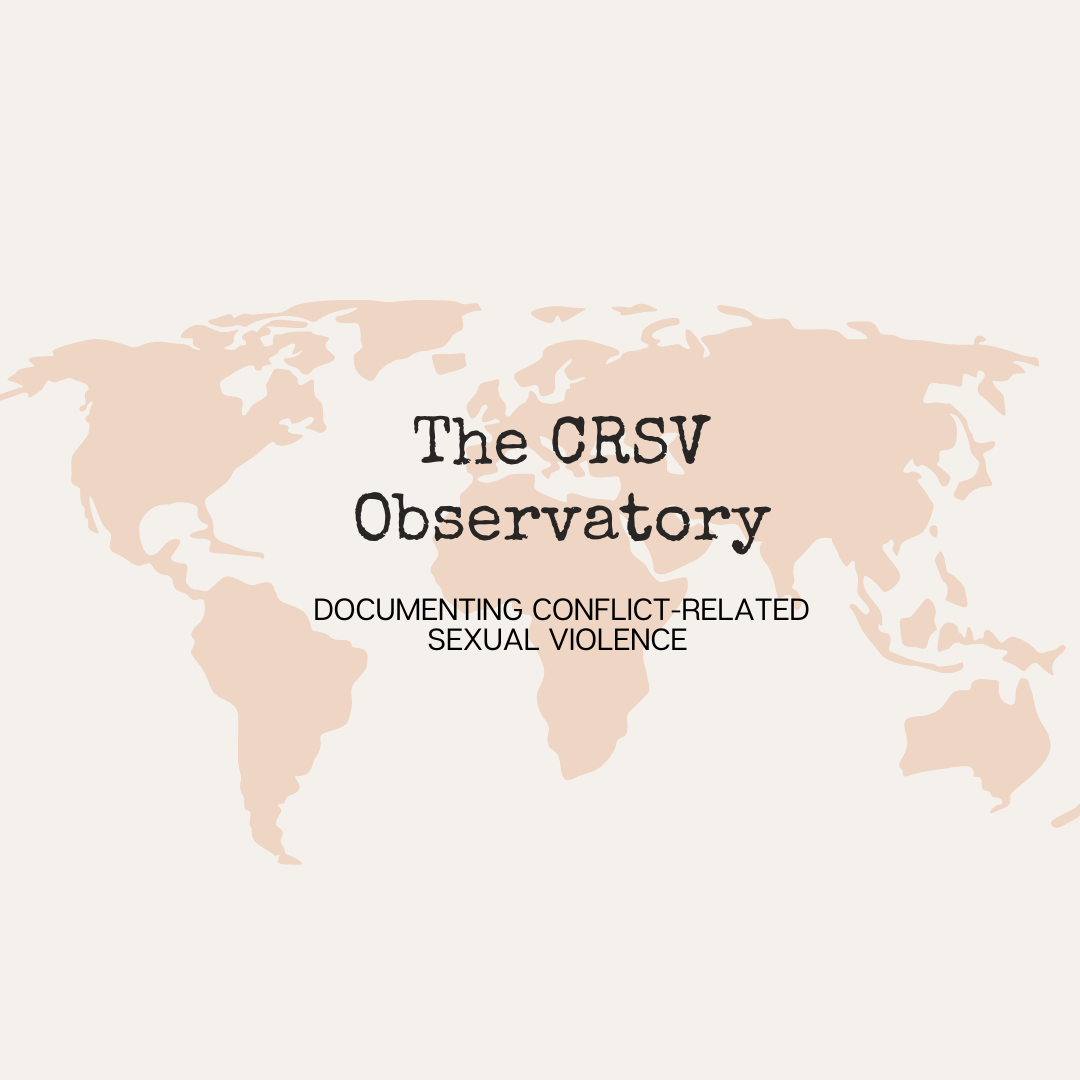Launching the CRSV Observatory

At first, rape and sexual violence was understood to be by-products of war. With time, it came to light that they were war tactics and carefully devised strategies in the way they were planned and executed – as several conflicts around the world have proven to be true. However, to understand the “why” of sexual violence in conflict, one needs to rely on intersectionality.
Wartime gender discrimination and violence is proof of the prevalent undercurrent of socio-cultural dynamics that speak of gender discrimination in peacetime. This is precisely the reason for the “effectiveness” of gender-based and sexual violence in war in breaking a nation’s social order. If there were no prevalent concepts in peacetime of honour, shame, sexuality, sacredness of virginity and modesty, gender-based and sexual violence cannot function so effectively in war. The surrounding element of cultural salience in peacetime surrounding a woman’s honour is a reflection of the connotations that sexuality has in peacetime.
The dynamics of hegemonic masculinity and its resultant conduct of dominance stem from the notions surrounding the protection of female honour, which in turn, is inherent in many traditional cultures. Most countries that have remained thriving hotbeds of impunity with gender-based and sexual violence in wartime are those that are peppered with a sanctimonious perception of women as sex objects in peacetime. By “sex objects”, the connotation intends to convey that women are representatives of the code of honour of their families and the code of honour of their blood and lineage. This in turn leads to the augmented sanctity attached to the notions of virginity, chastity, honour and virtue of a woman. Women themselves are brought up with the preconditioning that their honour and shame are non-negotiable elements for their acceptance in society. A woman is deemed the representation of the honour of the three-tiered hierarchy that commands her life: her husband, her family, and the community or province she represents.
Sexual violence in peacetime is often construed as crimes against the individual – while in war, the very same offences gain greater magnitude. The continued subsistence of a culture of silence in peacetime is a springboard for the unhindered occurrence of violence against women in war. In effect, therefore, bodies don’t turn battlegrounds when peace changes to war, but remain battlegrounds through peace and war.
In both peacetime and wartime, gender-based and sexual violence are a representation of the dominance and aggression of toxic and hegemonic masculinity, and of the fact that non-male bodies become focal points for aggressive discrimination based on ascribed sex or identified gender. The only difference in both situations of peacetime and wartime lies in the proportion and scale at which such violence takes place. During peacetime, there are scattered or episodic instances of violence that take place – inside homes, in public places, at work places and what not. The numbers are staggering, but the incidents are not part of a concerted strategy or plan that is executed with a view to create larger damage. The bodies are “individual” in that the cases are separate incidents and sexual and gender-based violence is not pursued as a policy of collective dominance, but of individual dominance in each equation. In wartime, the scale and proportion is far higher, the approach to sexual and gender-based violence in most instances are concerted, planned and part of a larger strategy that involves breaking the enemy, or the dissidents, or anyone that is considered on the opposing side.
To chronicle the real narratives of sexual violence in conflict zones world over and across time, on the occasion of the International Day for the Elimination of Sexual Violence in Conflict (19 June), I'm moved to announce the launch of The Conflict Related Sexual Violence (CRSV) Observatory maps sexual violence across the peacetime-wartime continuum both in contemporary times and across history. Each mapping report is accompanied by the image of fabric from the region, in order to drive home the fact that CRSV destroys the fabric of society. The observatory records broad overviews of the conflict history, chronicles the occurrence of sexual violence, and identifies how sexual violence was used as a specific war strategy. Individual survivor stories and graphic accounts have not been included within the current mapping exercise.
Check out the observatory here: www.gendersecurityproject.com/csrv-observatory




